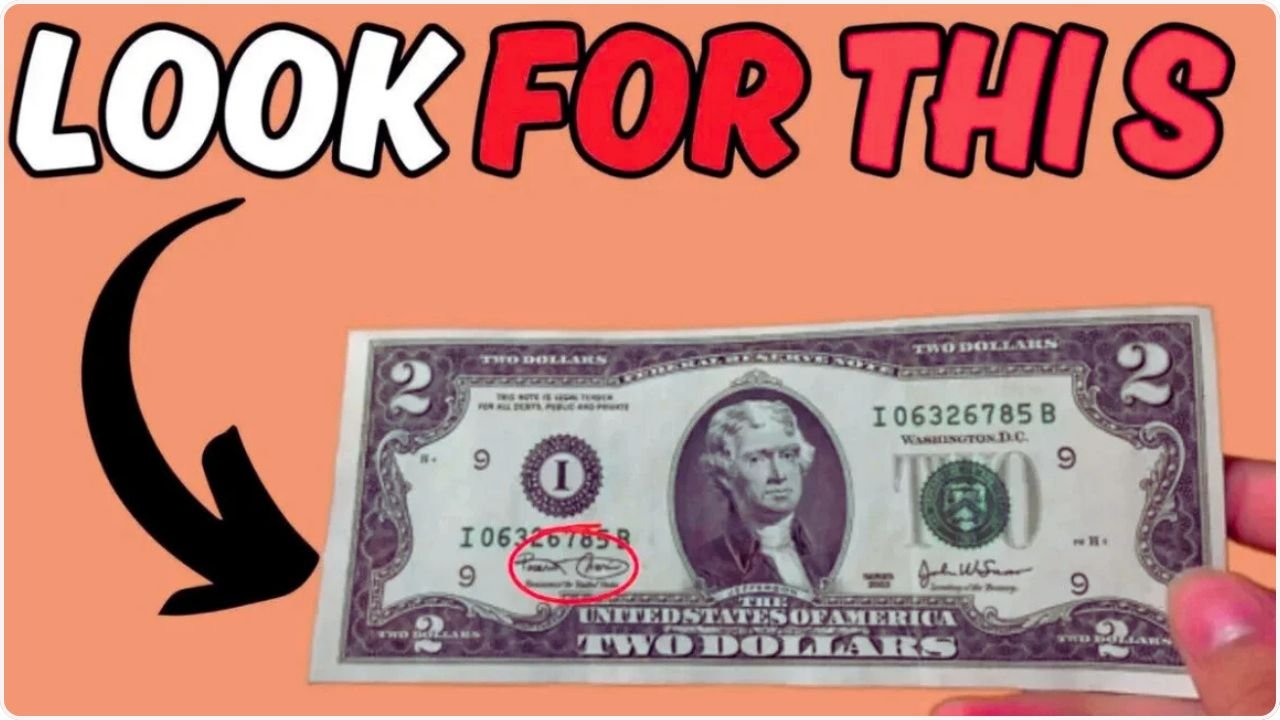A $2 bill, found among change at a gas station, has stunned collectors with a value of up to $2.6 million due to a rare printing error. This 1976 $2 bill, often overlooked as just a quirky piece of currency, might be hiding in your wallet, cash register, or old envelopes. The $2 bill, featuring Thomas Jefferson and the Signing of the Declaration of Independence, is already uncommon, but a specific error makes it a collector’s dream. Here’s why this bill is so valuable and how to spot one in your change.
What Makes This $2 Bill So Special?
The $2.6 million $2 bill is a 1976 Series with a “mismatched serial number” error, where the serial numbers on the top right and bottom left of the bill don’t match. This rare mistake happened during printing at the Bureau of Engraving and Printing, and only a handful of these bills slipped into circulation. The error is eye-catching, with one serial number starting with a different digit or letter than the other. Its rarity, combined with the $2 bill’s unique status in U.S. currency, drives its massive value, especially for bills in crisp, uncirculated condition.
How to Spot the Million-Dollar Bill
Finding this rare $2 bill requires a quick check. Here are some tips:
-
- Look at the serial numbers on the top right and bottom left of the bill’s front; they should be identical, but on this error, they differ (e.g., one starts with “A” and the other with “B”).
-
- The bill should be dated 1976, with Thomas Jefferson on the front and the Declaration signing on the back.
-
- Check for a green Treasury seal and serial numbers printed in green ink, typical of 1976 $2 bills.
-
- The bill is made of cotton-linen paper, measures 6.14 x 2.61 inches, and weighs about 1 gram.
-
- Bills in uncirculated condition, with no folds or tears, are worth the most.
Use a magnifying glass to compare serial numbers, and don’t write on or damage the bill, as it could lower its value.
| Feature | Details |
|---|---|
| Bill Type | $2 Bill (1976 Series) |
| Error Type | Mismatched Serial Numbers |
| Composition | 75% Cotton, 25% Linen |
| Weight | ~1 gram |
| Dimensions | 6.14 x 2.61 inches |
| Serial Number Color | Green |
| Estimated Value | Up to $2.6 Million (uncirculated) |
Why This Bill Is Worth a Fortune
The mismatched serial number $2 bill’s value comes from its extreme rarity and collector demand. Experts estimate only a few dozen of these error bills exist, making them one of the rarest U.S. currency errors. In 2024, a similar 1976 $2 bill sold for $2.55 million at a Heritage Auctions sale, and top-quality examples could hit $2.6 million in 2025. The $2 bill’s scarcity in everyday use, plus the dramatic error, makes it a prize for collectors. Bills with no wear, graded Gem Uncirculated 65 or higher by PMG or PCGS Currency, fetch the highest prices.
Other Valuable $2 Bill Errors to Find
The mismatched serial number isn’t the only $2 bill error worth hunting. Other errors include:
-
- 1976 Inverted Back: The back is printed upside down, worth $5,000-$10,000.
-
- 1976 Missing Ink: Parts of the design, like the Treasury seal, are missing, valued at $1,000-$3,000.
-
- 1976 Double Printing: Overlapped designs, can fetch $2,000-$5,000.
-
- 1928 Red Seal Errors: Older $2 bills with red seals and miscuts, worth $500-$2,000.
These errors make 1976 and earlier $2 bills a target for collectors, so check any you find.
How to Cash In on Your Find
If you think you’ve found a mismatched serial number $2 bill, handle it carefully to avoid folds or tears. Take it to a reputable currency dealer or grading service like the Paper Money Guaranty (PMG) or PCGS Currency for authentication. Grading confirms the error and assesses the bill’s condition, which determines its value. Auction houses like Heritage Auctions or Stack’s Bowers are ideal for selling high-value bills, with past errors fetching millions. Online platforms like eBay list smaller errors, but for a $2.6 million bill, professional grading is a must.
The 1976 $2 bill with a mismatched serial number is a hidden gem that could turn spare change into a fortune. With a value up to $2.6 million, it’s worth checking your $2 bills for mismatched numbers. If you spot something odd, get it appraised by an expert. This rare bill proves that everyday cash can hold life-changing value, so start searching your wallets, drawers, and change jars today!
